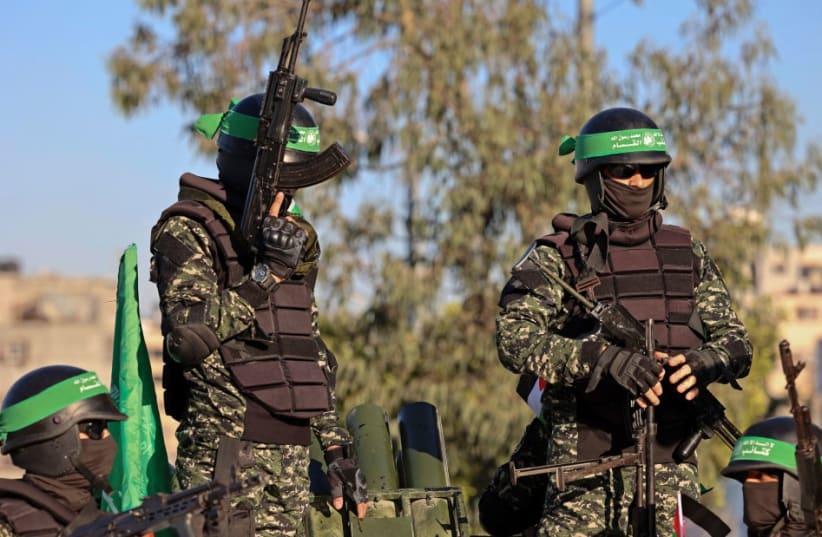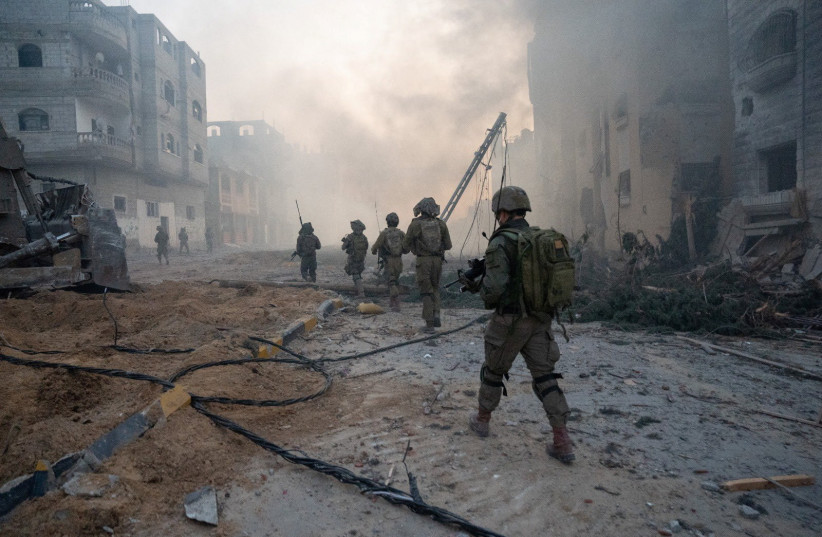The IDF continues to grind down Hamas in Rafah, with hundreds of terrorists killed in operations since early May. Two of the Hamas battalions in Gaza have been beaten, and two more are now suffering losses. Hamas fighters are fleeing to Mawasi, the humanitarian zone in Gaza. Hamas has lost a large number of the terrorists it had on October 7, possibly up to 17,000 fighters. However, the terrorist group continues to put on a mask of “this is fine.”
For months, the terrorist group has been saying that it transitioned to a new kind of war, splitting battalions into smaller units, small cells composed of three to five men. They pop up out of tunnels and they grab AK-47s stashed in buildings, while others have access to mortars or 107 mm. rockets and RPGs.
They are also booby-trapping buildings and targeting armored vehicles. Evidence of this comes from the killing of 12 soldiers in several days, including in a disaster that occurred to a Namer APC, killing eight troops in one instance.Hamas sees the IDF’s positions in the Netzarim Corridor and the Philadelphi route as targets of opportunity. For instance, according to pro-Iranian Al Mayadeen media, Hamas targeted soldiers in ambushes.
What is noteworthy here is the reliance of Hamas and Al Mayadeen on Israeli media to confirm whether the attacks were actually successful, as occurred on Sunday.This reliance may indicate that Hamas is having a tougher time getting its messages out of Gaza, or perhaps even that pro-Hamas outlets don’t always trust Hamas’s bragging.
Terrorist organizations collaborating
The terrorist groups in Gaza continue to work in tandem to target the IDF. For instance, Palestinian Islamic Jihad said it attacked an IDF patrol in a Rafah neighborhood, and that it has been carrying out attacks during Eid al-Adha.The terrorist groups said they targeted the Netzarim Corridor and also the Sufa outpost, near Kibbutz Sufa, and launched mortars into several areas of Rafah, while a different terrorist unit, called the National Resistance Brigades, also known as Martyr Omar al-Qasim Forces of the Democratic Front for the Liberation of Palestine, carried out an attack in Tel al-Sultan using mortars.Meanwhile, Hamas claimed it targeted a Namer APC using its al-Yassin 105 missiles, according to Al Mayadeen, referencing the Saturday attack.Hamas portrays these attacks as complex and sophisticated. The question, then, is whether Hamas is actually able to carry out complex and sophisticated insurgent-style attacks. If it has indeed lost so many men and battalions, it is unclear how it is able to carry out these attacks with any coordination or regularity.It is clear that Hamas is now leaning on other terror groups, such as PIJ’s al-Aqsa Martyrs Brigades and the DFLP.However, it also appears that Hamas has been able to recruit and that its strategy of sending its battalions to the ground and dispersing them is providing it the manpower it needs to keep fighting.Not only that, Hamas and the other groups appear to increasingly try to coordinate attacks on the Netzarim Corridor. Now, Hamas has the depth in Gaza to do this because the IDF has not operated much in the central camps area. Additionally, the terror groups have reconstituted themselves in northern Gaza, and are doing the same in Khan Yunis and Mawasi.Even if Hamas saw most of its 24 battalions shattered along with losses amounting to half and two-thirds of its October 7 manpower, the group has clearly not been shocked into defeat. It has not fallen apart or seen areas of Gaza slip from its control. If Hamas is able to do this despite such high losses, it is either very resilient or it had a much deeper bench than was known.It is likely that its continued existence is beholden to a combination of factors: Hamas had more members than estimated, it doesn’t need all its battalions, it has recruited, it relies on other terror groups to make up for attrition, and those groups have thousands of members.
Taken together, Hamas may have replaced a third or a half of its losses through a combination of factors. If that is indeed the case, then it could explain its ability to retain control and also continue to carry out daily attacks with increasing use of booby traps and other adaptive means.

